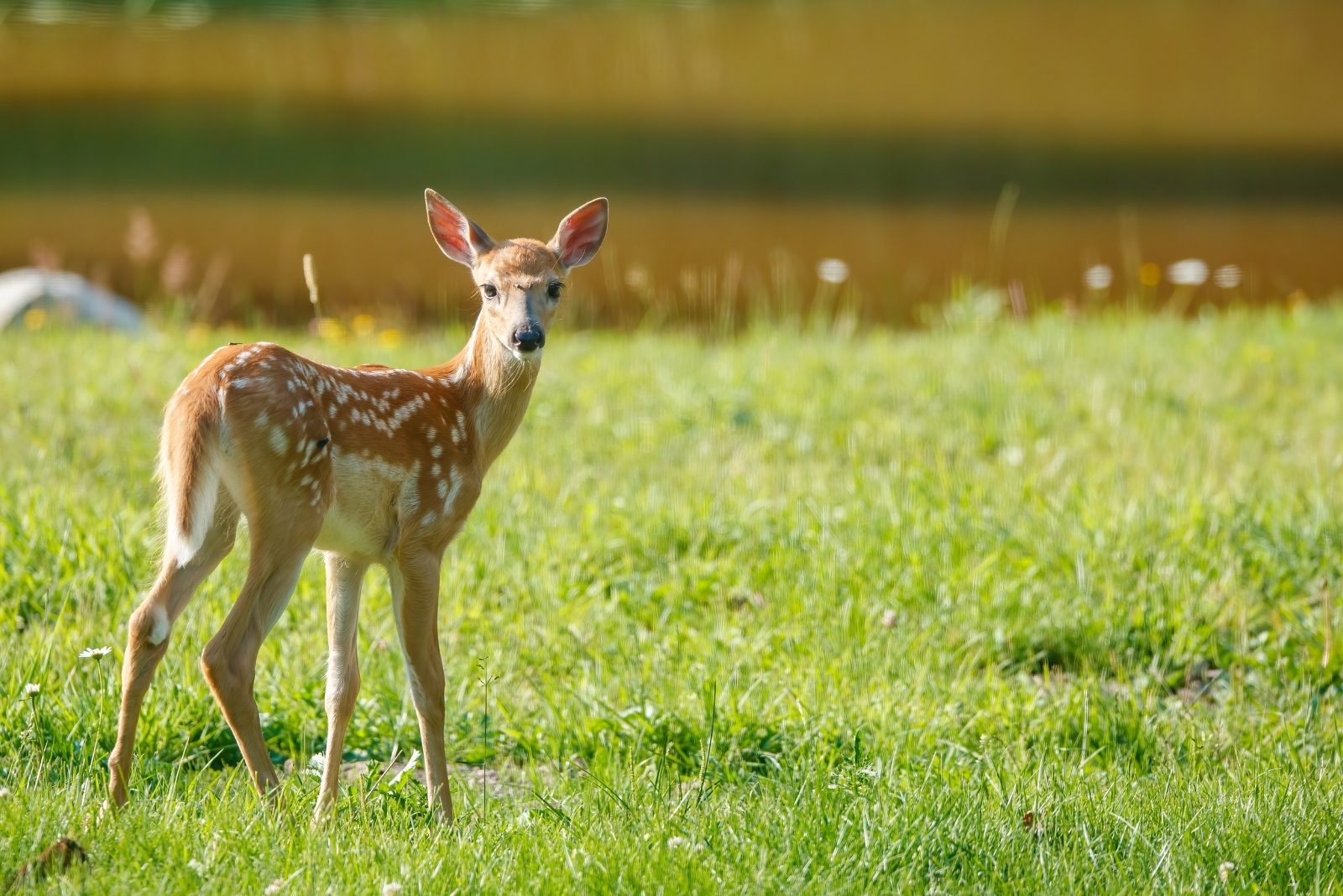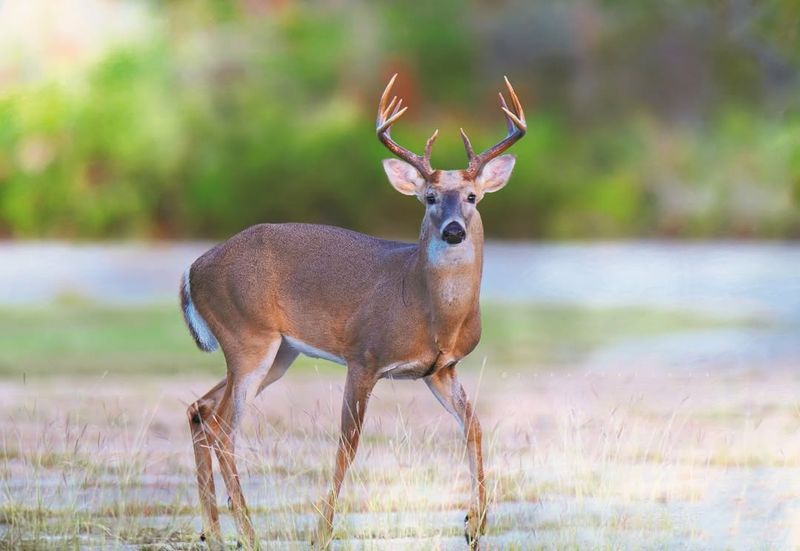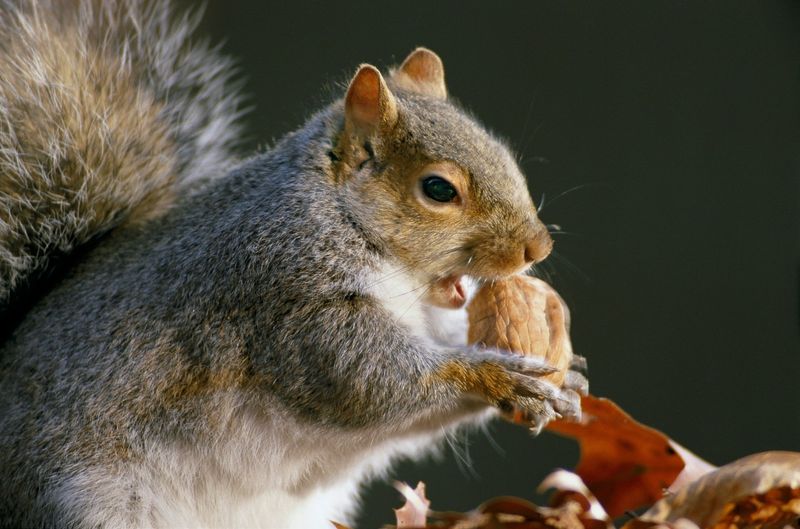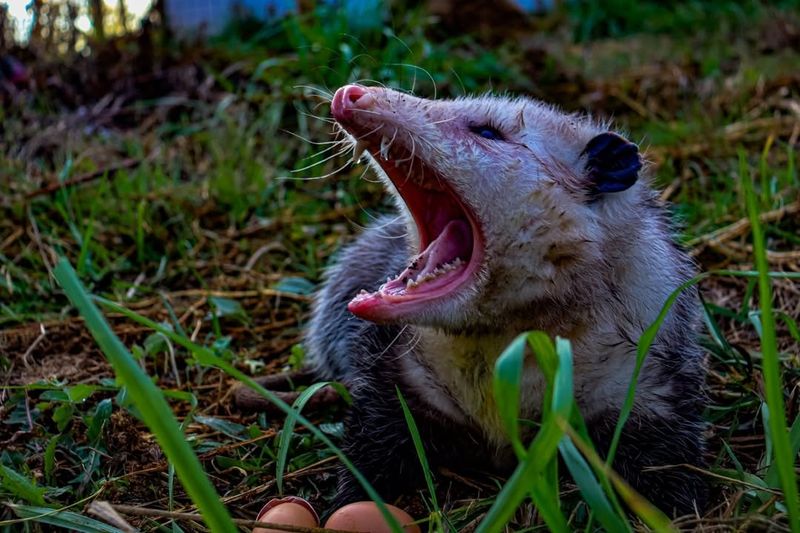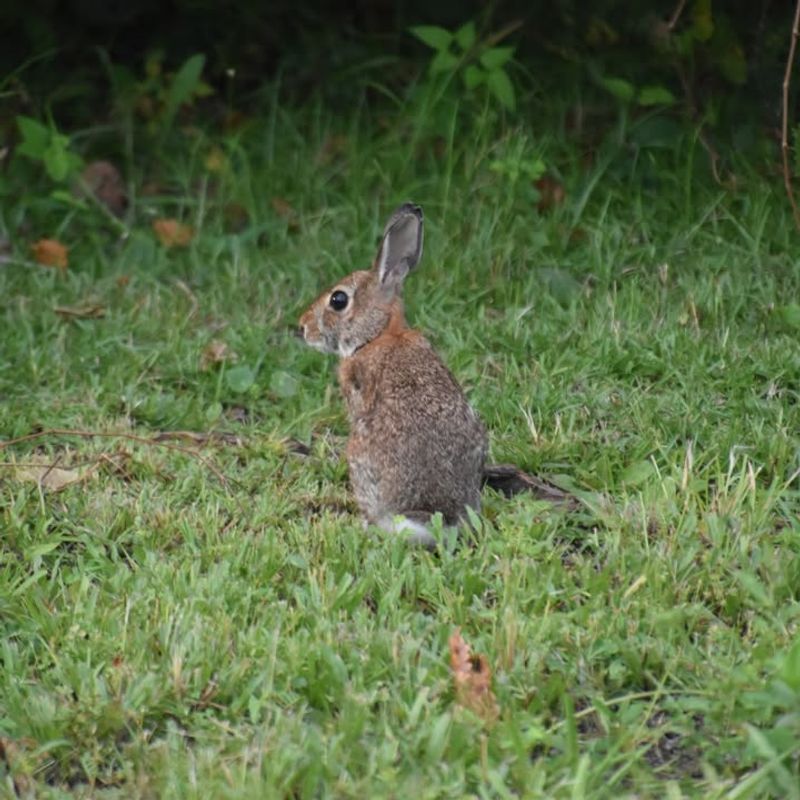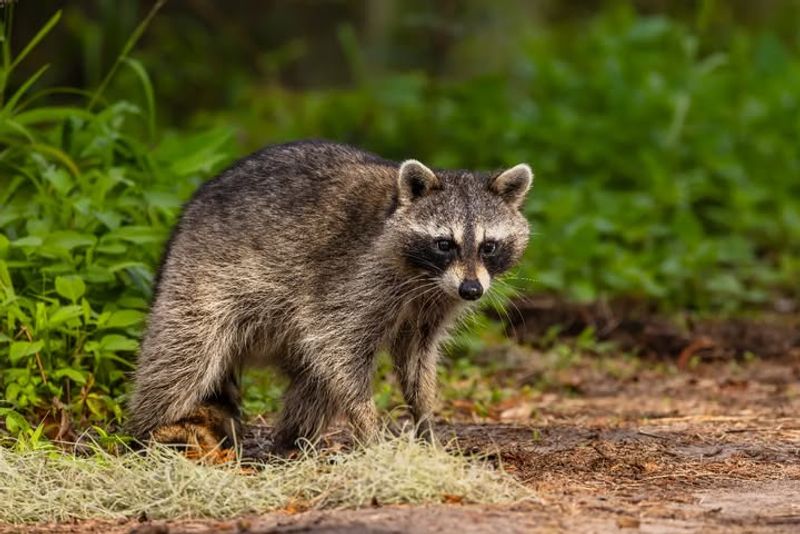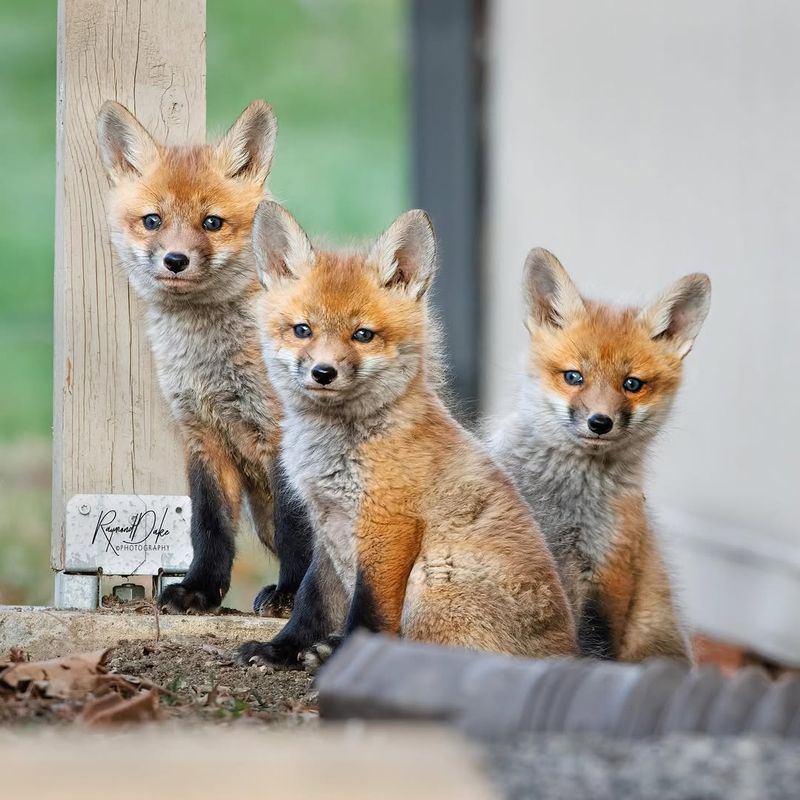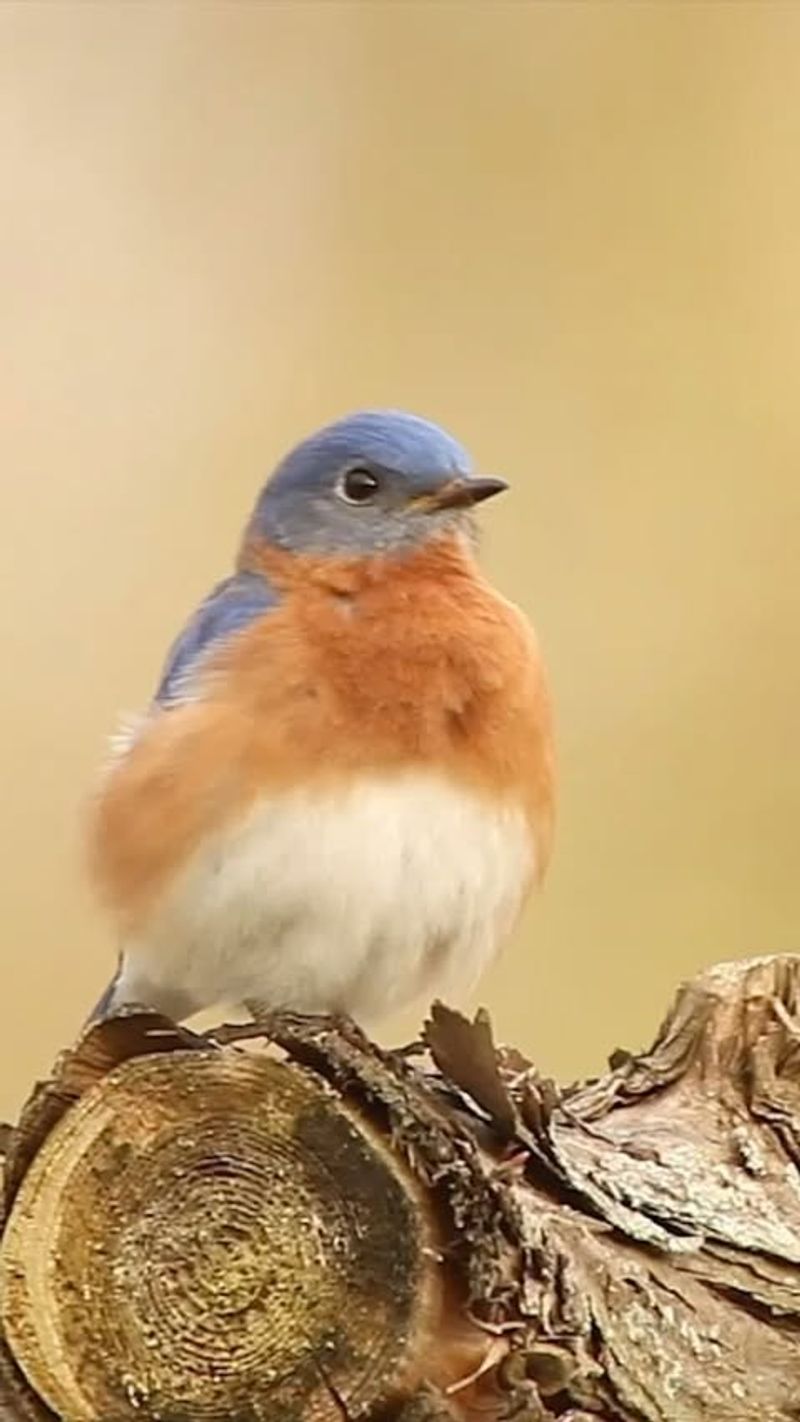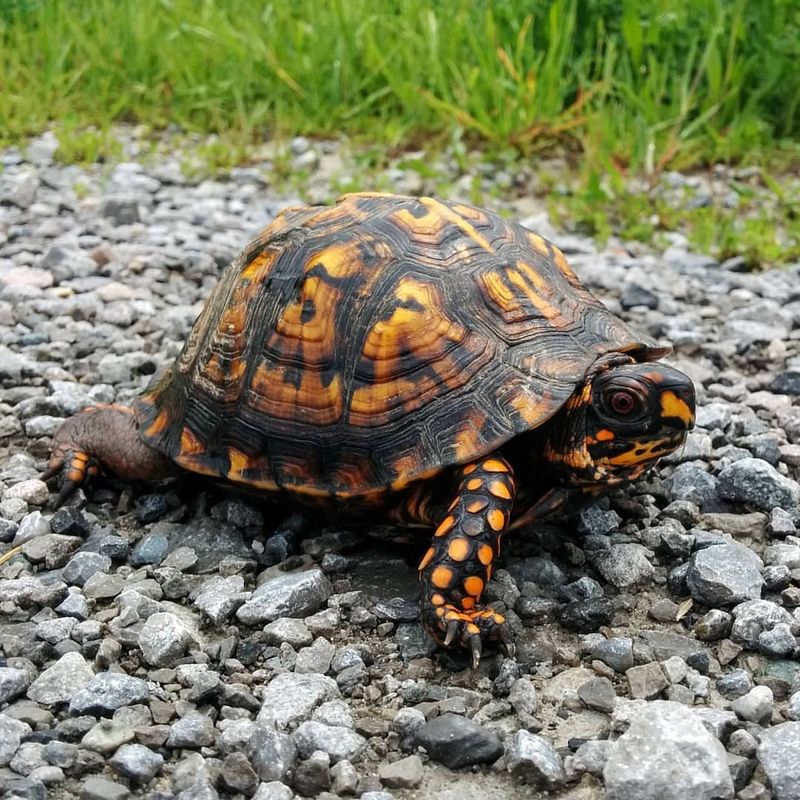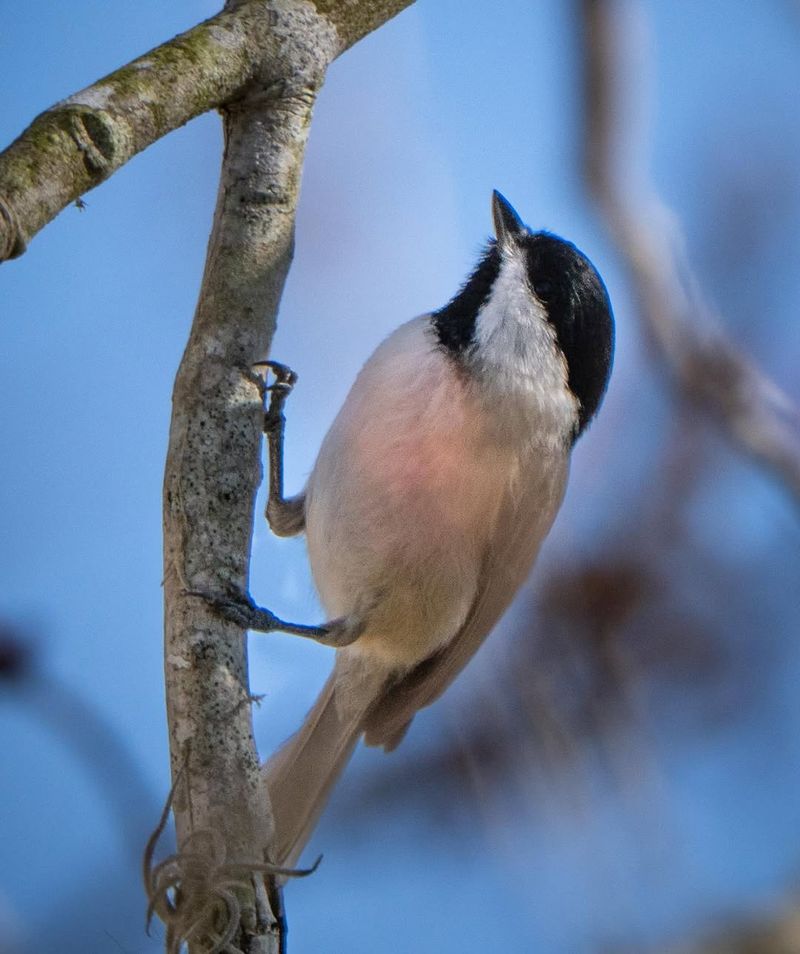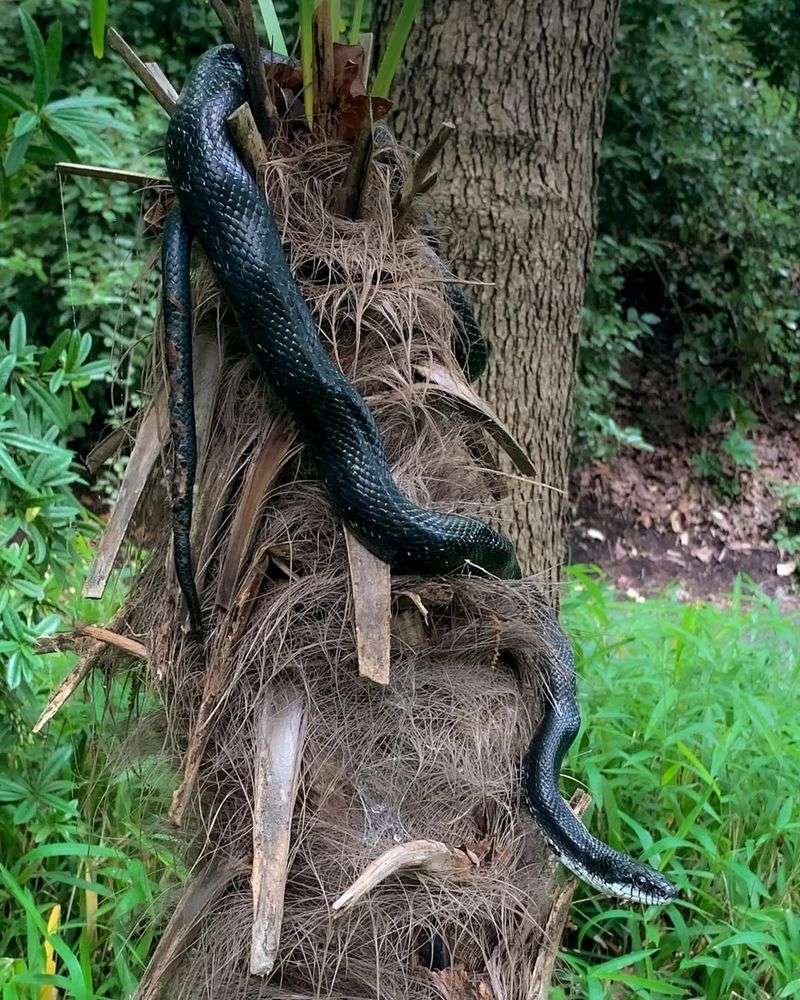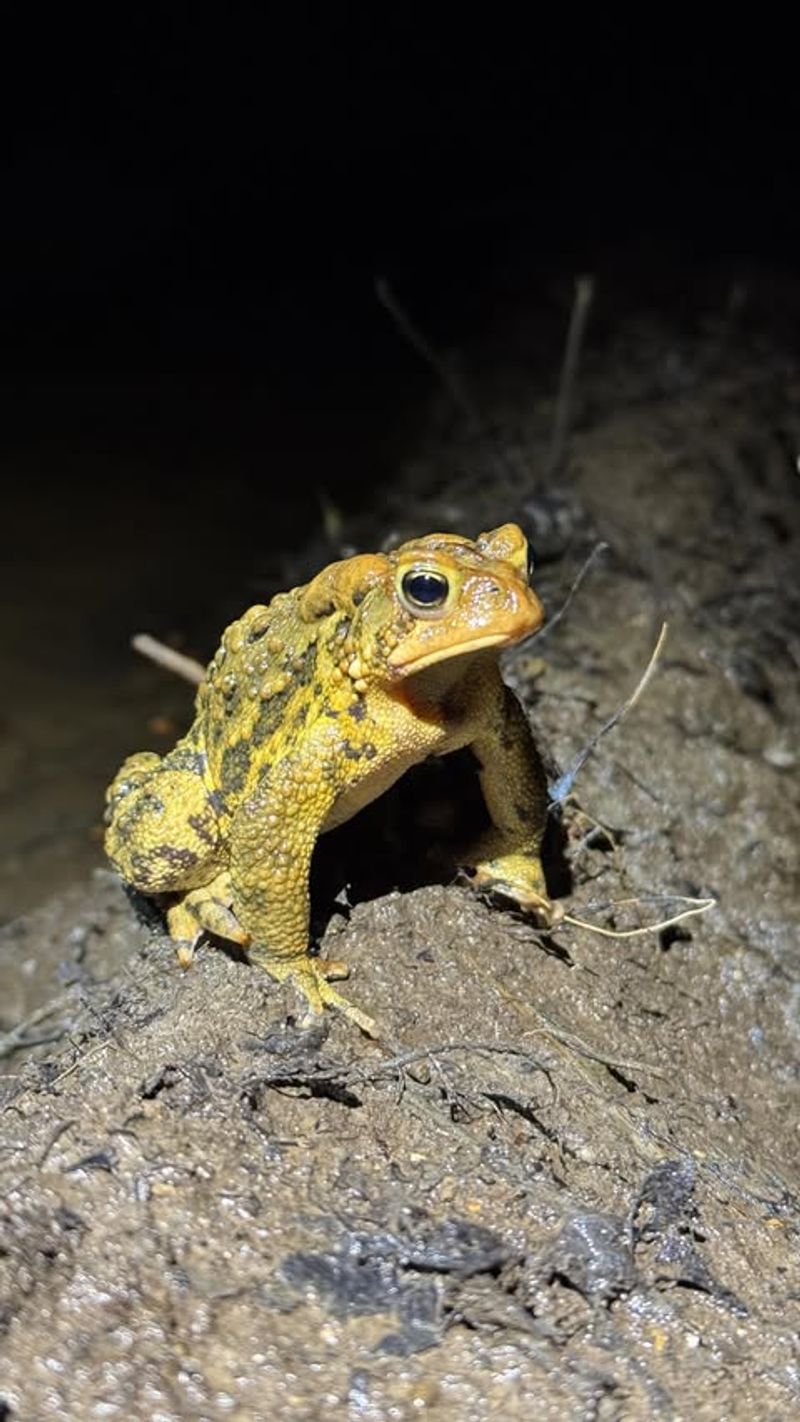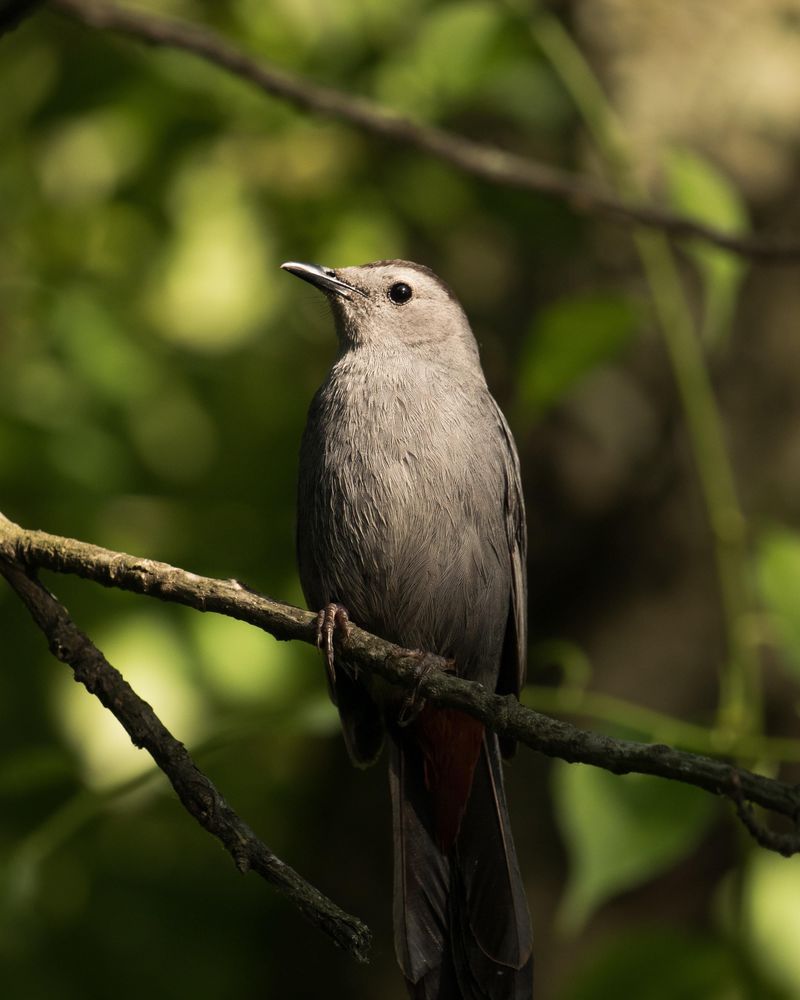North Carolina backyards are full of surprises, especially when it comes to wildlife. Some visitors are cute, some are shy, and a few might make you double-take.
Knowing who might be sharing your space makes every backyard stroll a little more exciting. Here are twelve wild animals that could be living right in your North Carolina yard.
1. White-Tailed Deer
Spotting a deer munching on your garden plants is surprisingly common across North Carolina neighborhoods. These graceful browsers love shrubs, flowers, and young tree shoots, making suburban yards perfect feeding grounds.
Males grow impressive antlers each year that shed in winter. Females travel with their spotted fawns during spring and summer months.
If you want to protect your plants, consider installing tall fencing or using deer-resistant varieties like lavender and rosemary in your North Carolina landscape.
2. Eastern Gray Squirrel
Acrobatic and endlessly entertaining, gray squirrels are probably the most frequent visitors to your yard. Watch them leap between branches and scurry along power lines with remarkable balance and speed.
These bushy-tailed critters gather nuts and seeds, burying them throughout your property for winter storage. Many forgotten caches sprout into new trees each spring across North Carolina.
Bird feeders become their personal buffets unless you install squirrel-proof designs with weight-activated perches that close when heavier animals climb aboard.
3. Virginia Opossum
Don’t let their rat-like appearance fool you—opossums are actually beneficial neighbors. North America’s only marsupial carries babies in a pouch and eats thousands of ticks each season, reducing Lyme disease risks.
When threatened, they famously play dead, lying motionless with their tongue hanging out. This defensive behavior can last for hours until danger passes.
You’ll likely spot them at night rummaging through compost bins or under bird feeders in North Carolina yards, cleaning up fallen seeds and overripe fruit.
4. Eastern Cottontail Rabbit
With their trademark cotton-puff tails and twitching noses, cottontails are adorable but hungry garden visitors. They prefer eating clover, grass, and tender vegetable shoots during early morning and evening hours throughout North Carolina.
Rabbits create shallow nests in tall grass where mothers leave babies during the day, returning only to nurse. Many people mistakenly rescue these seemingly abandoned young.
Chicken wire fencing buried six inches deep keeps them from burrowing under barriers and decimating your lettuce and bean plants.
5. Raccoon
Those masked bandits raiding your garbage cans possess surprisingly dexterous paws that can open latches and untie knots. Raccoons are incredibly intelligent problem-solvers found throughout North Carolina’s urban and rural areas.
They wash their food in water when available, earning them a reputation for cleanliness. Omnivorous appetites mean they’ll eat almost anything from pet food to garden vegetables.
Secure trash lids with bungee cords and bring pet dishes inside at night to discourage these nocturnal visitors from becoming regular guests.
6. Red Fox
Sleek and surprisingly adaptable, red foxes have moved into North Carolina suburbs where they hunt rodents, rabbits, and insects. Their rusty coats and bushy tails make them unmistakable as they trot through yards at dawn or dusk.
Fox families den under sheds, decks, and porches during spring when raising kits. Parents bring food to the entrance while teaching youngsters hunting skills.
They’re generally shy around humans and help control pest populations naturally, making them beneficial neighbors despite their reputation in folklore.
7. Eastern Bluebird
Few sights brighten a North Carolina morning like a bluebird’s vivid plumage flashing across your yard. Males sport brilliant blue backs and rusty orange chests, while females wear softer, muted tones.
These cavity nesters readily accept birdhouses mounted five to six feet high in open areas. They feast on insects during warm months and switch to berries when temperatures drop.
Installing a bluebird house with a one-and-a-half-inch entrance hole keeps larger birds out while providing perfect nesting spots for these beloved songbirds.
8. Eastern Box Turtle
Slow and steady, box turtles wander through North Carolina yards searching for worms, berries, and mushrooms. Their high-domed shells feature intricate yellow and orange patterns unique to each individual turtle.
A hinged lower shell allows them to completely close up when threatened, creating an impenetrable box. Some individuals live over fifty years in the same small territory.
Never relocate a box turtle you find—they possess strong homing instincts and will desperately try returning to their established range, often crossing dangerous roads repeatedly.
9. Carolina Chickadee
Cheerful and fearless, chickadees announce themselves with their signature chick-a-dee-dee-dee call throughout North Carolina backyards. These tiny acrobats hang upside-down from branches while searching bark crevices for insects and spiders.
Black caps and bibs contrast sharply with white cheeks and gray bodies. They visit feeders constantly, grabbing one sunflower seed at a time and flying off to cache it.
Patient observers can sometimes hand-feed these trusting birds, though it requires standing perfectly still with seeds in an outstretched palm for several minutes.
10. Black Rat Snake
Before you panic, know that rat snakes are completely harmless to humans and incredibly beneficial. These sleek, black serpents grow up to six feet long and excel at controlling rodent populations around North Carolina homes.
Excellent climbers, they scale trees and walls pursuing birds, eggs, and squirrels. Young snakes display gray and brown patterns that darken with age.
If you discover one in your garage or shed, simply give it space to leave on its own or gently encourage it outdoors with a broom.
11. American Toad
Warty and wonderful, American toads emerge at dusk to hunt insects in North Carolina gardens and lawns. Their bumpy skin secretes mild toxins that deter predators but are harmless to humans who handle them gently.
Males produce long, musical trills during spring breeding season that can last thirty seconds. They need water only for laying eggs, spending most of their lives on land.
Contrary to folklore, touching toads won’t give you warts—but their skin secretions may irritate eyes, so wash hands after handling these helpful pest controllers.
12. Gray Catbird
Listen for a cat-like mewing call, and you’ve likely found this slate-gray songster hiding in dense shrubs. Catbirds are talented mimics that incorporate sounds from other birds, frogs, and even mechanical noises into their varied songs across North Carolina.
They prefer tangled thickets and hedgerows where they build cup-shaped nests close to the ground. Fruit and insects make up their summer diet.
These curious birds often approach gardeners working in yards, hopping nearby to investigate disturbed soil for exposed insects and worms.

